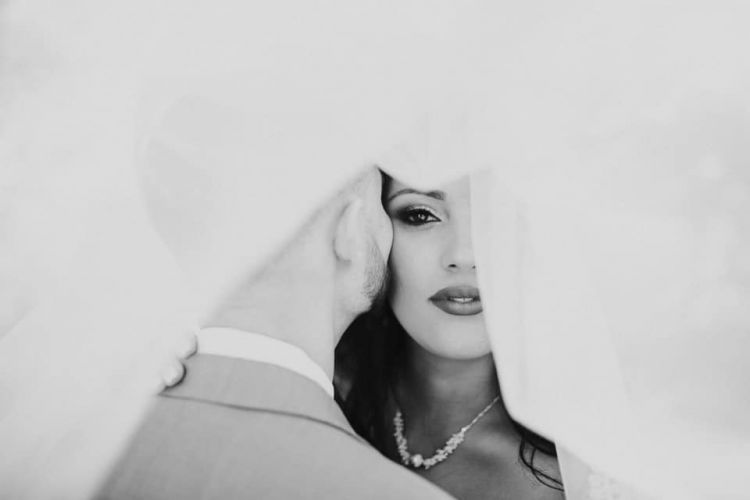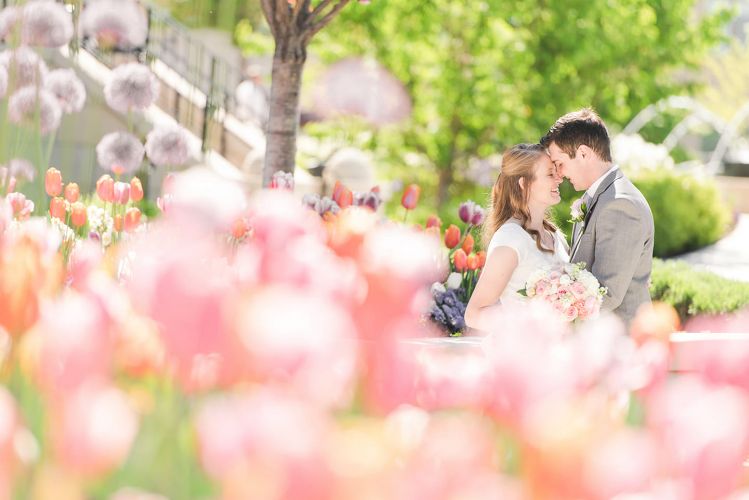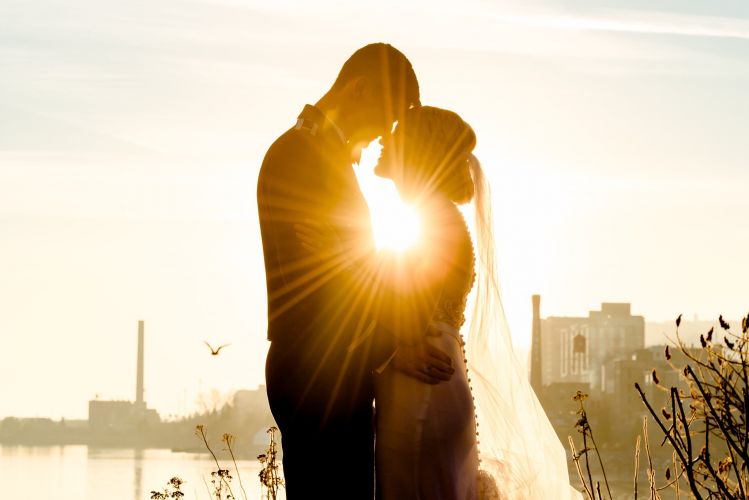
We asked members of our Master Lighting & Off-Camera Flash group, filled with predominantly wedding and event photographers, the following question:
Which one single lens/focal length leads to the images delivered from the ENTIRE DAY?
We have discussed which lens gets the most use after looking through our catalogs and browsing through a statistical sample of 10,000 delivered images in this video and came to the conclusion that the 24-70mm, as unpopular and surprising as it is, ended up being the winner with a whopping 68% of images taken on this one lens throughout a wedding day. Next came the 70-200mm, encapsulating 27% of images taken. It’s interesting because we often get asked which lenses event/wedding photographers should start their kit with and these two lenses are our top recommendations – you can read why here.
Let’s see what photographers had to say in this poll that we took with 300 of our community members:

Let’s break down these results since Facebook won’t let us embed this poll into our article:
- 24-70mm: 162 people
- 35mm: 66 people
- 70-200mm: 29 people
- 50mm: 21 people
- 85mm: 11 people
- 16-35mm: 8 people
- 24-105mm: 5 people
It’s fascinating to see the huge jump from our first place winner, the 24-70 focal length, to the next most popular lens the 35mm prime, especially considering that you can still shoot at 35mm with a 24-70, just not at wide-open apertures. The third-place lens is the 70-200mm which came in with only 29 people giving us a vote of confidence that they use this lens the most during wedding days and events. Logistically, longer focal lengths rank lower because of their inability to be used in-the-action and in small spaces which we often find ourselves in for these types of events.
Let’s take a look at some of the image examples that wedding photographers chose as well as their reasoning behind using their choice lens throughout a wedding day:
24-70mm
This is easily the most unpopular lens of the bunch but ranked as the highest performer when it comes to delivered images. We aren’t using the 24-70mm focal length for “bokeh” aesthetics. It can offer a modest amount of depth of field when shooting wide, particularly when zoomed in, but still, it’s not going to compare to a prime lens. Let it be known that newer variants of this focal length like the Canon 28-70mm f/2 are offering better bokeh aesthetics in this zoom focal length, but, the cost is significant.
Here are some of the strengths of a 24-70mm focal length:
- Versatility
- Speed
- In-the-action focal length
24-70mm Name Brand Variants: Canon, Nikon, Sony, Canon RF
24-70mm 3rd Party Variants: Sigma, Tamron
Here is one of our favorite community images using a 24-70mm focal length that really showcases the depth that you can create with a zoom lens.
Alex Valtchev – Website | Instagram

35mm
If you are looking to purchase a wider prime lens choose between the 24mm or 35mm focal length. They will give you similar results and it isn’t necessary to have both considering the images produced aren’t going to look that varied. This is a great tool to have in lieu of a 24-70mm zoom lens if you are completely opposed to having them in your kit. Here are some of the characteristics you’ll achieve with a wider prime lens:
- Wide w/ Shallow DoF
- “In-the-Action” Focal Length
- Foreground Elements + Special FX
- Watch distortion! (Center Compositions)
24/35mm Prime Lens Recommendations
- Canon 24mm f/1.4 L
- Canon 35mm f/1.4 L
- Canon RF 35mm f/1.8
- Nikon 24mm f/1.4 G
- Nikon 35mm f/1.4 G
- Sony 24mm f/1.4 GM
- Sony Distagon 35mm f/1.4
- Sigma Art 24mm f/1.4
- Sigma Art 35mm f/1.4
- Tamron 35mm f/1.4
Here are some of our community’s images using this lens:
Scott Hubbard – Website | Instagram

Jason Vinson – Website | Instagram

70-200mm
The 70-200 can provide a lot of compositional control, and even yield a comparable bokeh aesthetic as a prime lens when shooting wide open. However, it requires working space in order to do this. While an f/4 variant of this lens is good, if it’s in the budget I would recommend an f/2.8 variant that has stabilization. At longer focal lengths, you will be very appreciative of the additional money spent for a 70-200 that has better low light capability and the sharper images you will get from lens stabilization.
The strengths of the 70-200 focal length are its:
- Range in focal length
- Speed
- Compositional control
- Look for portraiture
- Compression
70-200mm Name Brand Variants: Canon, Nikon, Sony
70-200mm 3rd Party Variants: Sigma, Tamron
Here are some amazing images that our community members captured using this focal length:
Jessie and Dallin – Website | Instagram

Jessie and Dallin – Website | Instagram

Aaron Tremblay – Website | Instagram

Laura Robinson – Website | Instagram

50mm
The 50mm focal length is typically one of the first prime lenses wedding photographers purchase. Canon’s Nifty Fifty is regarded as a cheap and fantastic first dip into the prime category of lenses because it gives you that depth of field that a fixed zoom lens can’t offer at an inexpensive price point.
- Versatile Portrait/Anything Lens
- Good DoF/Bokeh Aesthetic
- Wide Shots Require Working Space
- Favorite for Detail/Storytelling Elements
- Great with Foreground Special FX
- Distortion with Close-Ups/Headshots
50mm Prime Lens Recommendations
- Canon 50mm f/1.8
- Canon 50mm f/1.4
- Canon 50mm f/1.2 L
- Canon RF 50mm f/1.2 L
- Nikon 50mm f/1.8
- Nikon 50mm f/1.4
- Sony Planar 50mm f/1.4
- Sigma Art 50mm f/1.4
- Tamron 45mm f/1.4
Looking for inspiration? Check out these photos from our community using a 50mm lens:
Timothy Eyrich – Website | Instagram

Pye Jirsa – Website | Instagram

85mm
Touted as THE portrait lens, the 85mm focal length gives you compression with a shallow depth of field, making it perfect for tight portraits within a scene. See some of the characteristics that make it so sought after:
- Great for Portraits, but Least Versatile
- Exaggerated DoF/Bokeh Aesthetic
- Great for Close Up Portraits
- Ideal for Background Control
- Requires Working Space
- Slow to Focus
85mm/+ Prime Lens Recommendations
- Canon 85mm f/1.8
- Canon 85mm f/1.4 L
- Canon 85mm f/1.2 L
- Canon RF 85mm f/1.2 L
- Canon 100mm f/2.8 (Macro)
- Canon 135mm f/2
- Nikon 85mm f/1.8 G
- Nikon 85mm f/1.4 G
- Nikon 135mm f/2
- Sony 85mm f1.8
- Sony Zeiss Batis 85mm f/1.8
- Tamron 90mm f/2.8 (Macro)
- Sigma Art 85mm f/1.4
- Sigma Art 105mm f/1.4
- Sigma Art 135mm f/1.8
Here are some images from our community members using the 85mm focal length:
Antonio Burruel – Website | Instagram

Aaron Tremblay – Website | Instagram

Although there are so many other lenses that wedding photographers gravitate towards, these were the most popular and for good reason! The zoom lenses give us versatility in the often tough and challenging climate of weddings while primes give us that stunning depth of field. What are your go-to lenses? Let us know in the comments below!





Get Connected!